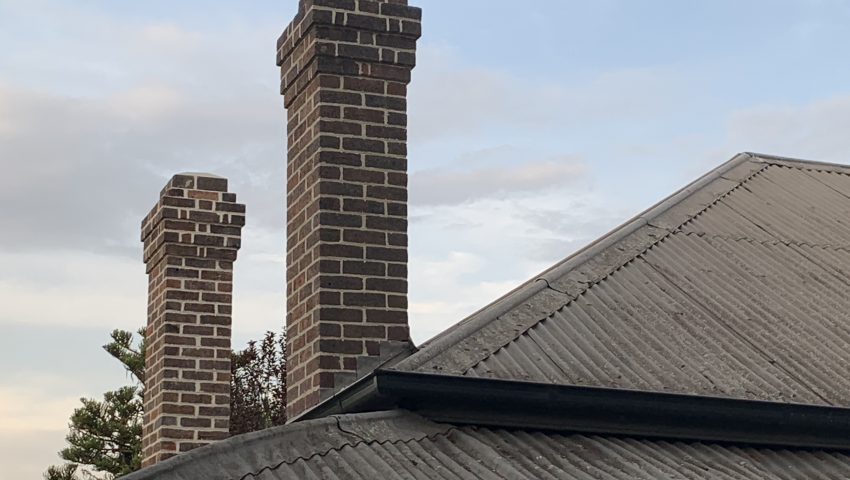Is approval required?
In most circumstances, development consent is ordinarily required for works to a heritage item or to a property which is situated within a Heritage Conservation Area (HCA).
However, many owners and managers of heritage listed properties or properties within a HCA are unaware that some certain works can in fact be undertaken without the need for development consent.
If you are proposing to carry out works to a heritage item or to a building, work, relic, tree or place in a HCA, and the works are considered by Council to be of a minor nature or for the maintenance of the property, development consent may not be necessary. However, Council must be notified of the proposed works and you must first obtain a written response from Council advising that development consent is not required before commencing any works. This is through what is usually called a ‘Minor Works Heritage Exemption’.
Clause 5.10 (3) of the Standard Instrument Local Environmental Plan states that development consent is not required if:
a. the applicant has notified the consent authority of the proposed development and the consent authority has advised the applicant in writing before any work is carried out that it is satisfied that the proposed development:
- is of a minor nature or is for the maintenance of the heritage item, Aboriginal object, Aboriginal place of heritage significance or archaeological site or a building, work, relic, tree or place within the heritage conservation area, and
- would not adversely affect the heritage significance of the heritage item, Aboriginal object, Aboriginal place, archaeological site or heritage conservation area.
b. the development is in a cemetery or burial ground and the proposed development:
- is the creation of a new grave or monument, or excavation or disturbance of land for the purpose of conserving or repairing monuments or grave markers, and
- would not cause disturbance to human remains, relics, Aboriginal objects in the form of grave goods, or to an Aboriginal place of heritage significance, or
c. the development is limited to the removal of a tree or other vegetation that the Council is satisfied is a risk to human life or property, or
d. the development is exempt development.
It is important to note that clause 5.10(3) operates proactively and not retroactively. That is to say, the clause cannot be applied retrospectively for works already completed.
Written confirmation that the works do not require development consent under clause 5.10 of an LEP does not provide exemption from another type of consent, approval or permit which may be required from the Council or another consent authority. For example, minor works and maintenance to heritage items which are also listed on the State Heritage Register, may require consent under the Heritage Act 1977, or removal or pruning of a tree may require approval under the Council’s Tree Preservation Policy.
So, what works could be considered to be of a ‘minor nature’ or ‘maintenance’?
In preparing a Minor Works Heritage Exemption, it is necessary to provide details of the proposed works so that Council can be satisfied those works are minor in nature or involve maintenance and will not adversely impact on the heritage significance of the heritage item or HCA. Most Councils will have an application form for this process.
As a general guide, the following types of works will not be considered by Council as ‘minor works’:
- Works that have already been carried out;
- Development or works that are currently the subject of a Development Application or a notice order under various Acts, especially the Environmental Planning and Assessment Act 1979 and the Local Government Act 1993;
- Development or works that contravene a condition of development consent;
- Demolition of significant built elements or fabric that can be repaired;
- Construction of carports, garages, driveways or hardstand parking spaces;
- Alterations and additions to a building;
- Demolition of a building, other that demolition of a non-significant ancillary structure;
- Construction of swimming pools or tennis courts.
Additionally, most Councils will consider development or works that are specified as exempt development under Division 1 of Part 2 in State Environmental Planning Policy (Exempt and Complying Development Codes) 2008 which are otherwise ordinarily excluded from or limited in some way in that Policy due to being on land that is either identified as a listed heritage item, or situated within a HCA.
The following types of works will generally be considered as ‘minor works’:
- Re-painting of a building or part of a building, but not the painting of face brick, stonework, tiling, terracotta, slate and other surfaces or fabric that were not traditionally or previously painted;
- Reinstatement of missing detailing or features to a building.
- Plastering or rendering of surfaces traditionally treated in that manner. The works must use traditional materials and finishes;
- Replacement of rainwater goods to a building including guttering and downpipes.
- Replacement of roof cladding In a traditional manner and using traditional materials.
- Repointing of brick or sandstone walls in a traditional manner and using traditional materials.
- Replacement of damaged timber boards to a verandah, with timber boards of a traditional size and materiality.
- Reinstatement or replacement of a boundary fence, including a front boundary fence or gate, using traditional proportions, details and materials.
- Replacement of non-traditional windows and doors with windows and doors of traditional proportions and materials.
- Repair of chimneys using traditional materials without altering the size or details.
- Replacement or renovation of a non-original bathroom or kitchen.
Whilst each type of works listed above may be considered minor on an individual basis, the scale, location and cumulative impact of those works will be taken into consideration by the Council when determining whether the development will have an adverse impact on the heritage significance of the heritage item or HCA..
‘Maintenance’ generally involves a lesser degree or work compared with works of a minor nature, such as cleaning gutters, pruning shrubs, cleaning surfaces, etc. Maintenance is defined in the Standard Instrument LEP as:
Maintenance, in relation to a heritage item, Aboriginal object or Aboriginal place of heritage significance, or a building, work, archaeological site, tree or place within a heritage conservation area, means ongoing protective care, but does not include the removal or disturbance of existing fabric, alterations (such as carrying out extensions or additions) or the introduction of new materials or technology.
It is important to remember that the purpose of clause 5.10(3) is to provide an exemption from the need for development consent for minor works that are of a minor scale and scope and have a minor impact to the significance of the heritage item or Heritage Conservation Area.
















